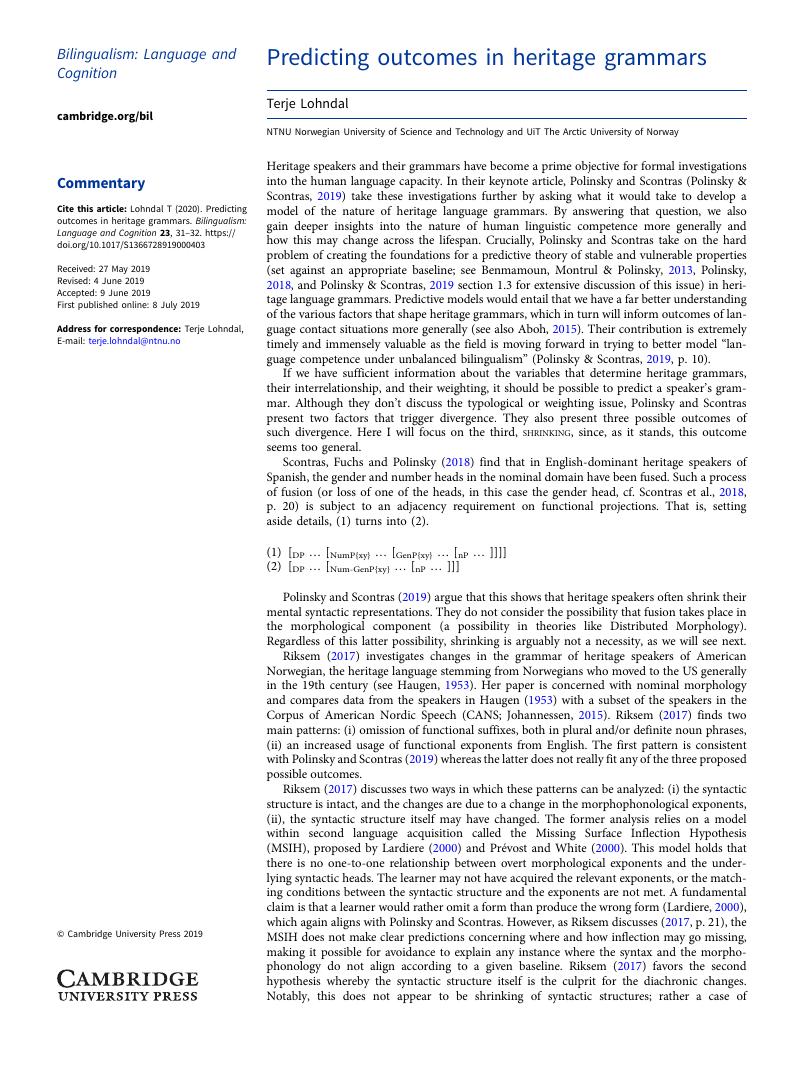Crossref Citations
This article has been cited by the following publications. This list is generated based on data provided by Crossref.
Lohndal, Terje
2020.
A distributed architecture of L1 attrition.
Second Language Research,
Vol. 36,
Issue. 2,
p.
177.
Abutalebi, Jubin
and
Clahsen, Harald
2020.
Heritage languages, infants’ language recognition, and artificial grammars for bilingualism research.
Bilingualism: Language and Cognition,
Vol. 23,
Issue. 1,
p.
2.





